Announcer:
The following program is a PBS Wisconsin original production.
Frederica Freyberg:
The eyes of the world turn to Kenosha once again.
British News Announcer:
Jury in the U.S. state of Wisconsin…
Frederica Freyberg:
As the fate of Kyle Rittenhouse lands in the hands of a Kenosha jury, a jury which deliberated for days, weighing charges of murder. Demonstrators made their presence known while awaiting the verdict. And public health officials warn of increasing strain on the state’s hospital system as COVID-19 cases tick up.
Ryan Westergaard:
We’re really trying to sound the alarm that COVID-19 epidemic is heating up.
Frederica Freyberg:
First tonight, Kyle Rittenhouse found not guilty on all counts.
Woman:
The first count of the information, Joseph Rosenbaum, we, the jury, find the defendant, Kyle H. Rittenhouse, not guilty. As to the second count of the information, Richard McGinnis, we, the jury, find the defendant, Kyle H. Rittenhouse not guilty.
Frederica Freyberg:
An across-the-board acquittal. We hear the latest from reporter Marisa Wojcik. What to expect with COVID-19 numbers heading into the holidays. And another Democrat enters the race to replace Ron Kind. It’s “Here & Now” for November 19.
Announcer:
Funding for “Here & Now” is provided by the Focus Fund for Journalism and Friends of PBS Wisconsin.
Frederica Freyberg:
The verdict in the murder trial of Kyle Rittenhouse in Kenosha: not guilty on all counts. The world was watching the case of a teenager armed with an AR-15 who inserted himself into a chaotic racial justice protest as a self-described protector and medic. Rittenhouse admitted he shot three men the night of August 25, 2020, killing two of them. But he testified it was self-defense. We go to Kenosha and to “Here & Now” reporter Marisa Wojcik. Marisa, thanks very much for being here.
Marisa Wojcik:
After 26 hours of deliberating, the jury found Rittenhouse not guilty on all five counts.
Justin Blake:
We need to be in the process of rebuilding the system that continually has African-Americans going to jail at rates that you can’t believe while white counterparts commit heinous crimes and go home to their families.
Mark Richards:
As he said when he testified, he did not start this and we’re thankful in more ways than one that the jury finally got to hear the true story.
Marisa Wojcik:
So this is the end of the story, but where did it all begin? All week long, tensions rose over the fate of Kyle Rittenhouse. Rittenhouse stood trial on charges including first-degree murder after shooting three people, killing two of them, during Black Lives Matter protests in Kenosha in August of last year. Prosecutors depicted Rittenhouse as an out-of-town agent of chaos who instigated the conflict while defending a business he had no connection to brandishing an AR-15 rifle and that Rittenhouse himself was the only real threat that night.
Thomas Binger:
These guys with the AR-15s are just wannabe soldiers, acting tough, trying to manufacture some personal connection to this event, furthering their own personal agenda, just a small part of the deluge of chaos tourists we saw here in Kenosha.
Marisa Wojcik:
Rittenhouse’s attorneys portrayed the teenager as someone with ties to the Kenosha community who was there to help safeguard against bad actors, guarding local businesses and they said he was preventing an irrational and crazy protester from stealing his AR-15 and using it against him and others.
Mark Richards:
Kyle shot Joseph Rosenbaum to stop a threat to his person. And I’m glad he shot him because if Joseph Rosenbaum had got that gun, I don’t – for a minute – believe he wouldn’t have used it against somebody else. He was irrational and crazy.
Marisa Wojcik:
During proceedings the defense made motions for a mistrial, including an argument that video evidence shown repeatedly to the jury was mishandled. The trial has focused international intention in on Kenosha, Wisconsin. With the significance of the verdict spanning beyond Kyle Rittenhouse as a statement on gun rights, racial justice and white vigilantism.
Frederica Freyberg:
So Marisa, as this trial culminated in the reading of the verdict, what was that like when it came in as not guilty on all counts?
Marisa Wojcik:
It was dramatic inside the courtroom. Kyle Rittenhouse was crying and he collapsed. Outside the courthouse, activists were clearly disappointed but they said they are going to continue to fight for justice. Rittenhouse’s attorney in a press conference afterwards that he represents clients, not causes, but activists and Black Lives Matter protesters do think that this is a matter of a cause for racial justice.
Frederica Freyberg:
So there has been response from all corners of elected officials, right?
Marisa Wojcik:
That’s right. So Democrats like Governor Tony Evers say that Wisconsin has a long way to go towards equity. Republicans like Assembly Speaker Robin Vos says this proves that the justice system works. Even President Joe Biden weighed in, saying that we should trust the jury system and abide by their verdicts.
Frederica Freyberg:
So we know that tensions were high just ahead of the verdict and there were predictions of trouble, but seeing behind you now it looks quiet, which is a good thing. What do we know about what Kyle Rittenhouse plans to do now?
Marisa Wojcik:
His attorney said that Kyle and his family plan to move out of the area and his attorney says he hopes that he will keep a low profile.
Frederica Freyberg:
All right. Marisa Wojcik, thanks very much. Thanks for your coverage.
Marisa Wojcik:
Thank you.
Frederica Freyberg:
The weeks of replaying the events of August of 2020 during the Rittenhouse trial has retraumatized people in the community and beyond. It’s been a reliving of the anger and angst that followed the murder of George Floyd and then the police shooting of Jacob Blake in Kenosha. And now the young, armed vigilante has been exonerated of murder. It’s a lot. Angela Lang, executive director of Black Leaders Organizing for Communities is here to talk about it. Thanks for being here once again.
Angela Lang:
Yeah. Thanks for having me.
Frederica Freyberg:
So first, what is your reaction to this verdict?
Angela Lang:
It’s hard. It’s hard to process. It’s hard to hear. As I’m processing and reflecting, I don’t think I’m surprised by any means. We’ve been through this before. But it doesn’t make it any less heartbreaking and it doesn’t make it hurt less even though we know how our system works or doesn’t work for us.
Frederica Freyberg:
Now, you wrote a searing essay published this week saying that there is no good outcome from this trial. Why not?
Angela Lang:
You know, the way I’ve been thinking about it is that if we got the verdict like we did today, it’s a giant injustice in that this child, he was 17 at the time, was able to cross state lines, murder two people, injure another and be a free person. That’s a huge injustice. But to also know that had he been convicted, we know that there were credible threats of the far right and Proud Boys and militia folks that were ready to pick up where Kyle had left off had he been convicted. And so knowing that, knowing that whatever the outcome was, it’s such a hyper-polarized time and an incredibly tense racialized time it’s hard to feel that Kenosha isn’t just smack dab in the middle and there was really no good outcome out of today.
Frederica Freyberg:
Describe for us the connection between racial justice movements and this case, because the people who were killed were white.
Angela Lang:
Yeah. And I’m really glad that you brought that up, because some people don’t necessarily understand why people that are in support of Black lives are upset when the victims were indeed white. But we have to understand why everyone was out there in the first place. They were actually protesting the shooting of Jacob Blake. They were standing with the Black Lives Matter protesters and members of the Kenosha community. And so whether it was a Black person that was killed or if they were white, at the end of the day, these were people a part of our movement defending the futures and the lives of Black people.
Frederica Freyberg:
One thing I saw this week was that supporters of Kyle Rittenhouse showed up outside the courthouse during jury deliberations, including a Republican candidate for U.S. Senate in Missouri who was photographed with two people flashing a sign associated with white supremacists. What kind of a gut punch is that?
Angela Lang:
It’s just — we’re not even talking about dog whistles at this point. A dog whistle is something that you could barely hear and was kind of over the radar. The fact that people are openly using these white supremacist symbols goes to show that these people are emboldened and they fear nothing because they see that there’s no consequences for their actions. And so we’re making an opening for this type of behavior and these shootings and this violence to continue because there isn’t a strong enough backlash. And so at times where people may have hid under a pointy, white hood or hid somewhere else and may not have known — and made known their true values, they’ve been emboldened by the former president. They’ve been emboldened by so many people and so many situations in this country that they’re okay openly flashing these white supremacist symbols as they’re running for office. And I think it’s incredibly disturbing and I think it’s also a terrible sign for our democracy and everyone should be concerned about that as well.
Frederica Freyberg:
In your essay you also said that the failure to move our country forward is pouring gasoline on a fire and that countering racism can’t solely rest on the shoulders of the traumatized and grieving. Who else should step in and what should they do?
Angela Lang:
Yeah. This is a point where everyone that is unequivocally against racism and white supremacy needs to step in and that’s exactly what Anthony and Jojo did and why we are rallying and why this case means so much to us, is that everyone has a role to play, understanding that this is not just at the hands of Black and brown people that are experiencing the trauma and the collective racism and white supremacy on a day-to-day basis. But our whole country needs to take a strong stance and unequivocally reject white supremacy, white nationalism and far right extremism. The fact that we aren’t and that there isn’t this collective rejection just allows for continuing and openings for people to take advantage and to continue this behavior and continue, quite frankly, the destruction and erosion of our democracy and, quite frankly, of this country.
Frederica Freyberg:
Angela Lang, thank you very much for joining us on this day.
Angela Lang:
Thank you for having me.
Frederica Freyberg:
In the wake of the protests in the summer of 2020, the Madison Police Department commissioned a report from a criminal justice research center at the University of Pennsylvania Law School. The report looked at how Madison police handled use of force during the protests. The report makes 69 recommendations to the department for how to better handle protests that turn violent, largely focusing on a “less is more” approach. The recommendations include using small, mobile police forces instead of large police lines. Communicating more with protesters before and during demonstrations. Having more training for police officers. Having them wear body cameras and limiting use of tear gas for only when there is a risk of imminent physical danger to people or property.
Shon Barnes:
Everyone should avoid CS gas whenever possible. That is — I agree with that statement 110%. But we have to understand that there’s always something that we have to weigh and that is the harm to human beings, the harm to life.
Frederica Freyberg:
The Madison police chief says he plans to adopt all 69 of the report’s recommendations.
At the state Capitol this week, a legislative task force looking at education and economic racial disparities released its final report. This group is part of the task force Assembly Speaker Robin Vos convened in the wake of the George Floyd protests.
Kalan Haywood:
This has been a great endeavor. We have covered educational stuff, from increasing diversity in the teacher workforce, getting and maintaining more teachers of color, breaking down barriers to that and breaking down barriers in education and increasing reading literacy.
Frederica Freyberg:
In pandemic news, as fall rounds into winter, Wisconsin health officials are sounding the alarm on the COVID-19 surge in the state saying daily case counts nearing 4,000 haven’t been seen since the end of 2020. Additionally, Wisconsin hospitals are now nearly full, with 96% of ICU and 99% of the intermediate beds taken by patients. That leading health officers in Wisconsin to once again beseech people to “help flatten the curve.”
Ryan Westergaard:
It’s getting hard to find beds for patients, either beds in the hospital where they are presenting for care in the emergency department or people who need a higher level of care. It’s becoming more difficult to find a bed to transfer them.
Frederica Freyberg:
Just across our borders, Minnesota and Michigan have the worst rate of new COVID infections in the country. For the latest on what’s going on regionally, we turn to Mayo Clinic and Dr. Melanie Swift who joins us from Rochester, Minnesota. Thanks very much for being here.
Melanie Swift:
Thank you for having me.
Frederica Freyberg:
So why is this happening again and why in the upper Midwest?
Melanie Swift:
It’s both a blessing and a curse that we’ve had higher uptick of vaccination in this part of the country than some other regions. It has helped to slow the curve of this recent surge. So we haven’t seen the huge, dramatic peaks of cases that some parts of the country experienced last summer with the Delta variant. Instead, we have had more modest cases, but they have not extinguished over time as you do when you have a more aggressive surge. So we continue to have what we kind of call fuel for the fire: unvaccinated people at just enough level that they continue to contract and spread COVID.
Frederica Freyberg:
So if the answer to help flatten this curve even though it’s not that dramatic surge that you described, if the answer is to get vaccinated, what more can be done, especially in counties across the states that have lower vaccination rates?
Melanie Swift:
I think that we are going to see some significant changes in terms of workplace requirements. Unfortunately, that’s rather contentious. But it appears to be likely necessary to get the levels of vaccination that we need. We are fortunately able to now vaccinate children as young as five now that schools are back trying to meet in person, families are going to try to gather over the holidays and into next year. Vaccinating children could help us stop this surge that’s going on right now.
Frederica Freyberg:
As the months tick by, protection from two-dose vaccines even and natural immunity from infection wane, I understand, so are the unvaccinated and waning immunity groups colliding with the Delta variant and now indoor weather?
Melanie Swift:
All of those factors are playing a role. We are seeing in our own internal data that unvaccinated people are being infected at much higher the rate than vaccinated people who even haven’t had a booster yet who are still being infected at a higher rate than those who have had their booster. We do expect some recommendations from CDC soon for boosters for all and strongly encourage anyone eligible for a booster to go ahead and get it as we head into this season where many factors collide that could make it a bad winter for COVID.
Frederica Freyberg:
Because at this point, are we talking about the only fully-vaccinated people are those with boosters?
Melanie Swift:
Fully vaccinated continues to mean that you’ve had your initial series plus two weeks of time. However, I think we’re going to need a new term for fully vaccinated and up-to-date with all recommended boosters.
Frederica Freyberg:
Is it really safe at this point with what we’re seeing in these kind of case counts in Wisconsin and Minnesota, is it really safe for people to gather for Thanksgiving or travel?
Melanie Swift:
I think that we unfortunately need to be exercising caution like we did last year. I’m concerned about Thanksgiving coming up. Children are not yet fully vaccinated and won’t be until mid to late December. And families cannot take a false sense of security from that first shot of vaccine. And unvaccinated people continue to be at high risk. Initially-vaccinated people without a booster and they were vaccinated more than six months ago, they are at higher risk than their boosted counterparts. So we do have to continue taking precautions unfortunately.
Frederica Freyberg:
Yeah. Because people are just over hearing that, right? But I want to ask this question. Wisconsin’s gun deer season opens Saturday and our health department in Wisconsin has offered guidance that hunters should mask while field dressing deer. How concerning is the research showing the deer population infected with COVID?
Melanie Swift:
I think that’s an abundance of caution. There certainly is evidence that whitetail deer have antibodies to COVID and have been infected. There’s really no evidence of a significant spread to humans. However, you can get many things from deer and other wildlife. So precautions like wearing gloves are very important, not letting your hunting dogs or other animals come in direct contact with wild animals still very important. Not eating, drinking, smoking while you’re dressing deer very important. However we just really don’t see anything that USDA or CDC has seen in terms of wildlife like deer transmitting COVID directly to humans. So that’s an extra measure of caution, but I don’t have concern that we’re going to have significant transmission from deer to hunters.
Frederica Freyberg:
Very, very good news. Dr. Melanie Swift, thanks very much.
Melanie Swift:
Thank you for having me.
Frederica Freyberg:
Back at the state Capitol, Governor Tony Evers did as promised and vetoed the maps Republicans passed in the latest round of redistricting. In his veto message, he called the maps, “gerrymandering 2.0.” The GOP maps would largely maintain existing district boundaries. Boundaries which saw Republican majorities in the legislature for the past ten years. The maps will now have to be sorted out in court ahead of the 2022 elections. And we learned this week that the state Supreme Court plans to weigh in on the dispute over the state’s voting maps. The conservative majority court has set aside a tentative hearing date in January. At the same time, Republican candidate for governor Rebecca Kleefisch is asking the high court to take up her lawsuit against Wisconsin election commissioners. The suit asks the court to declare illegal the Wisconsin Elections Commission guidance allowing ballot drop boxes, nursing home poll workers and consolidated polling places. The justices last year said challenges to voting practices should be made before elections, not after. The court has not yet ruled whether to take the case.
Looking ahead to next year’s elections, the open seat in the 3rd congressional district in western Wisconsin is expected to be a nail-biter. It’s a district that incumbent and retiring Democratic Congressman Ron Kind narrowly won and Donald Trump also won in 2020. The field is filling up for Democrats looking to replace Kind. Last month we interviewed State Senator Brad Pfaff. Tonight we hear from Democratic candidate Rebecca Cooke. Cooke is a board member of the Wisconsin Economic Development Corporation, the state economic development agency. Governor Tony Evers appointed Cooke to that position in 2019. She also owns a home goods store in Eau Claire and founded a nonprofit grant program for women entrepreneurs in western Wisconsin. Rebecca Cooke joins us now from Eau Claire. Thanks very much for being here.
Rebecca Cooke:
Thanks for having me.
Frederica Freyberg:
So why do you want to represent the people of the 3rd in Washington?
Rebecca Cooke:
Yeah. You know, I’m a doer. I’ve proven that time and again at the grassroots level in my hometown through supporting women entrepreneurs and at the state level advocating for those same folks I met across the kitchen table and the boardroom. I really feel career politicians have left us behind. Washington can’t solve everything. I think we here in west central Wisconsin really have the grit and the muscle, the smarts and the common sense to solve a lot of these challenges. I’ll take a lot of those values I learned growing up on a dairy farm here in the region not to give up when times are tough and really to show up and listen and fight for our values in the halls of Congress.
Frederica Freyberg:
So you’ve just touched on this, but you will have to find your seat at the table as a political newcomer.
Rebecca Cooke:
Right.
Frederica Freyberg:
This strikes you as a positive?
Rebecca Cooke:
Yeah. I think that, you know, we’re due for fresh leadership and I think fresh faces. I might be new to running for political office, but I’m not new to serving my community. I’ve been doing that in the work that I’ve been doing at the grassroots economic development level for a number of years. And so I think — I think that we’re tired of kind of the same old career politician establishment politics that we’ve seen and want to see a Congress that’s more reflective of everyday America and of everyday folks stepping off the sideline to serve their community.
Frederica Freyberg:
What are the most important issues you’d like to address in your district?
Rebecca Cooke:
Sure. You know, this campaign is going to be run on a lot of kitchen table issues. Things that everyday Wisconsinites care about, having access to affordable quality health care, ensuring our students – no matter the school district that they’re living in – have access to the resources in the classroom they need to thrive. We talked about this a little bit earlier. Broadband, having connectivity to marketplaces and from a telehealth perspective and so our students aren’t doing their homework in a McDonald’s parking lot. I think we need to treat broadband like rural electrification and get it done. There’s a lot of promise in the infrastructure bill to be able to do something like that. I think the other piece is job creation and having — building a sustainable economy here within the district and having employers that really want to invest in the quality of life of workers here.
Frederica Freyberg:
The announced and Trump-endorsed Republican in this race came very close to beating the incumbent in the last election. What kind of headwinds does that represent for you in a district trending right?
Rebecca Cooke:
Sure, I think — what we need to do is really bring it back home as far as connecting with folks in rural communities. I think you saw more folks coming out for Trump because Trump was showing up in those communities. I think as Democrats we need to be connecting with folks not just when it’s an election year or when it’s convenient, but showing up and advocating for rural communities all the time. I think it’s a district that’s started to skew more right and I think we need to bring it back to values that we all care about and are central to the way we live our everyday lives here in Wisconsin. So I think running a campaign that’s very value-centric in a big tent that opens everybody from both sides of the aisle under it is what I intend to do.
Frederica Freyberg:
As you know, the president just signed the infrastructure bill and now the social spending part of the Biden agenda is making its way through Congress. What is your level of support for these trillions of dollars of spending?
Rebecca Cooke:
You know, I’m supportive of anything that, you know, helps working families in our region out, you know, from Medicare expansion to paid leave, easing the burden of child care and pre-k for our young people. I’m an advocate for anything that eases the burden of what the last couple of years have been like for working families in our region.
Frederica Freyberg:
All right. Rebecca Cooke, we leave it there. Thanks very much. Thanks for your time.
Rebecca Cooke:
Yeah. Thank you.
Frederica Freyberg:
That’s our program for tonight. As we continue to cover the events in Kenosha, visit our website at PBSwisconsin.org/news for the latest. I’m Frederica Freyberg. Have a great weekend.
Announcer:
Funding for “Here & Now” is provided by the Focus Fund for Journalism and Friends of PBS Wisconsin.
Search Episodes
Related Stories from PBS Wisconsin's Blog

Donate to sign up. Activate and sign in to Passport. It's that easy to help PBS Wisconsin serve your community through media that educates, inspires, and entertains.
Make your membership gift today
Only for new users: Activate Passport using your code or email address
Already a member?
Look up my account
Need some help? Go to FAQ or visit PBS Passport Help
Need help accessing PBS Wisconsin anywhere?

Online Access | Platform & Device Access | Cable or Satellite Access | Over-The-Air Access
Visit Access Guide
Need help accessing PBS Wisconsin anywhere?

Visit Our
Live TV Access Guide
Online AccessPlatform & Device Access
Cable or Satellite Access
Over-The-Air Access
Visit Access Guide
 Passport
Passport





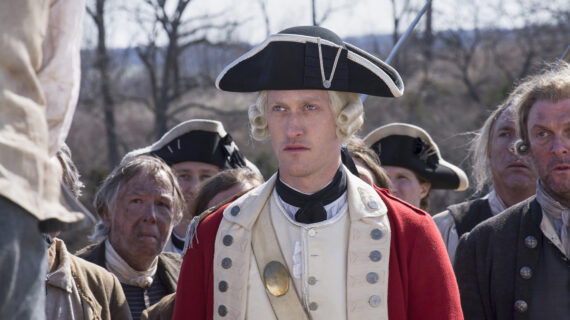
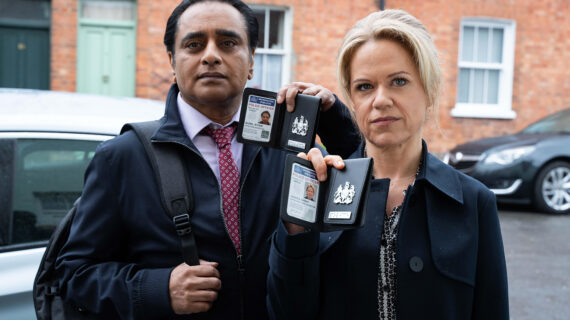
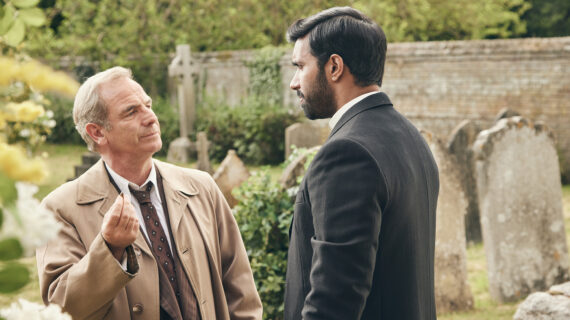
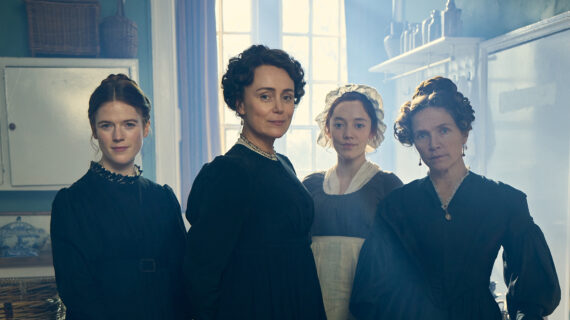

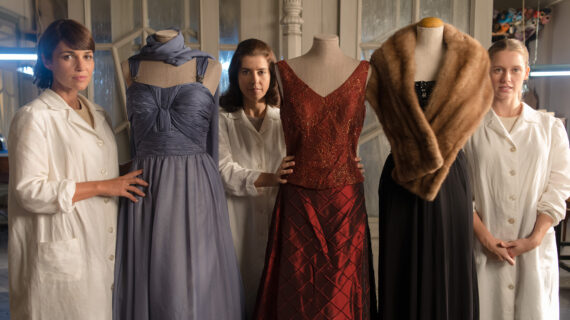
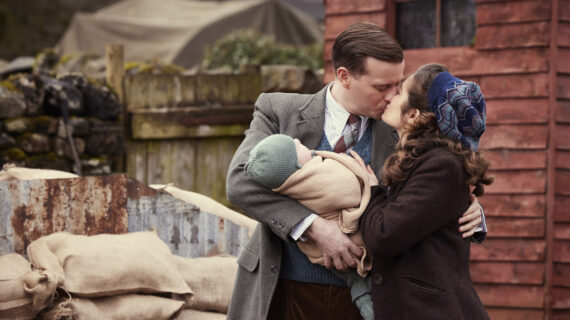

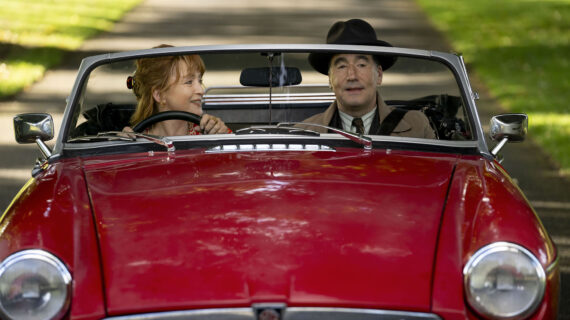
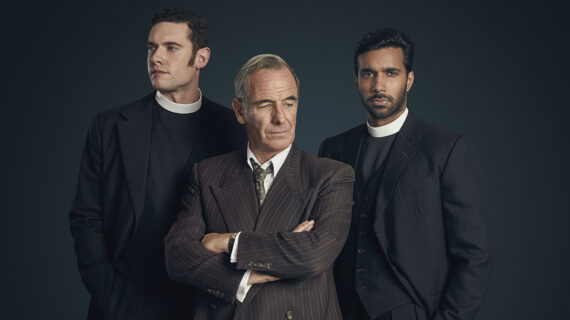
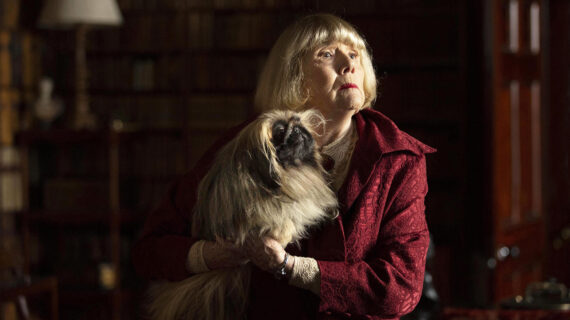

Follow Us